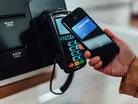Will digital cards and digital wallets kill off plastic?

The advent of new technologies – including mobile wallets and smartwatches – as well as the residual effects of the COVID-19 pandemic mean that digital payment methods are on the increase. But will that mean the end of cash or even plastic cards?
“When people discuss the future of payments they tend to predict the end of cash,” say Marion Laboure and Jim Reid, authors of Deutsche Bank research into the future of payments published in 2020. This is not a vision they agree with, but they do accept that, while cash will remain in circulation, “the coming decade will see digital payments grow at lightning speed”.
Indeed, Deutsche Bank’s research shows that consumers in six major markets intend to rely less on cash and cards in favour of contactless and mobile payments. Paying for goods using a cheque is expected to become less commonplace in five out of the six markets – only China sees a future for cheques as a payment method, the only country witnessing a net positive increase in all payment methods that Deutsche Bank asked about, perhaps reflecting the country’s emerging middle class and rising levels of disposable income.
Cash is expected to decline as a payment method in three of the six countries – the UK, France and Italy – but not in the US, China or Germany. The latter is among the most cash-loyal nations in the world, with consumers preferring to pay using physical currency in over half of transactions.
Contactless payments are expected to become more popular, driven by the highest rates of growth in the UK, France and Italy. Smartphone payments and smartwatch payments will also rise in popularity; in both cases China is expected to see the highest rate of growth. Of course, this research does not take into account the boom effect experienced during the pandemic, when contactless payment methods were considered favourable due to hygiene and public safety considerations – so it’s possible that Deutsche Bank’s initial findings will actually be accelerated because of the pandemic.
Will digital wallets and payment cards replace plastic?
The obvious question, then, is whether emerging payment methods will replace the old-fashioned way of paying for goods. “Technologies such as digital wallets, virtual cards and embedded finance are already replacing cards,” proclaims Pat Phelan, Managing Director UK&I at GoCardless.
“You don’t need to look far to see it happening – walk onto public transport and see people tap and go with their phones at the barriers, or use their device to pay for dinner at a restaurant. It's only a matter of time before plastic cards are redundant. However, current payment options are mostly still linked to a physical payment card, even if that card never leaves the wallet. It’s likely this will change too, particularly if and when these digital wallets become linked directly to a user's bank account or other payment methods, leaving the payment card fully behind.”
However, not everybody is so convinced. Some observers believe there is room for plastic in a digital economy, even if in small quantities. “Digital technologies may one day replace physical cards, but this isn’t likely to be anytime soon,” says Frazer Harper, VP of Payments Products at Dojo.
Although there is unquestionably appetite for digital payments, there are still drawbacks to the technology that could prove to be deal-breakers. “Not only is it a payment method reliant entirely on device battery life, it’s also one that could leave people behind,” Harper continues. “It’s important we don’t exclude people as a consequence of tech innovation – and with traditional card usage still high, we see these physical cards playing a key role for the mid-to long-term.”
This is something that Dr Stephen Whitehouse, a partner in Oliver Wyman’s Retail and Business Banking practice, concurs with. “While digital finance is on the rise, plastic cards will likely stick around for a while, especially in areas where digital solutions are less accessible or accepted,” Whitehouse says.
Will biometrics become cards’ security standard?
Despite their enduring popularity, there are still areas where the physical payment card could evolve. One of the most exciting, particularly from a fraud perspective, is biometrics. This is a catch-all term used to refer to several different technologies – including fingerprint recognition, which is already popular but expected to grow in the coming years; facial recognition, which is benefitting from the improved reliability of AI; voice recognition and voice authentication, which, inspired by the popularity of virtual assistants, are also on the rise; and iris scanning, an emerging technology that takes advantage of the uniqueness of the iris, the colourful part of the eye surrounding the pupil.
Biometrics provide a fine balance between convenience and security. Recent research from GoCardless shows that nearly 70% of consumers would abandon a checkout process if it was overly complicated, while 80% would abandon the process if the security arrangements didn’t feel safe enough. This means biometrics can tick off two important boxes for consumers.
“Businesses can enter this ‘goldilocks zone’ by providing consumers with the ability to make a payment using simple biometrics, such as fingerprint or facial recognition,” GoCardless’ Pat Phelan says. “Most of the time this can be easily done, and on a device that payers use all the time such as a smartphone.
“Looking ahead, we believe consumers will become even more interested in non-card payments that have extra security built in. One example is open banking payments, which have seen volumes nearly triple in just one year. These payments use bank-grade security, requiring consumers to log into their online banking platform – often with biometrics – before they can make a payment. This hurdle is much harder for fraudsters to overcome compared to entering stolen card details into a checkout. It makes open banking payments more appealing for fraud-conscious consumers.”
Biometrics is the future of card security, believes Dojo’s Frazer Harper: “In a decade’s time, I see a world where biometrics such as a person’s face or their fingerprint becomes the primary method of authentication, providing access to funds without the need for knowledge-based card numbers and PINs.”
And finally, Catharina Eklof, Chief Commercial Officer at IDEX Biometrics, tells FinTech Magazine: “Following an increase in demand for card payments, and more specifically contactless payments, biometrics have become an unparalleled means of authentication. As user behaviour changes, so do the standards for user protection. Fingerprint biometrics can provide near-instant authentication of payments and identity, making consumers' lives more convenient and providing them with more choices for confirming their identity. With definitive advantages to both users and issuers, biometric payment cards have the potential for exponential growth well-beyond 2023.”
What does the future hold in store for card payments?
Our evolving payment habits, coupled with the scope for greater use of biometrics, mean that the card payments industry could be completely reshaped in the course of the next decade. But there are still things holding us back from greater adoption.
These can be categorised into three buckets, Frazer Harper believes: “Regulation, while acting as a key guardrail, will always slow advances in technology while the industry ensures it’s being deployed in the right way. Consumer adoption always takes time, as there’s a requirement to educate users around new technologies and facilitate change around existing habits.
“Finally, there's always work to do to build trust when we’re discussing new technologies around payments. How can we demonstrate the new tech is safe and secure to build that trust? The combination of all three of these factors always takes time on a population-wide scale.”
Despite these immediate obstacles, our experts still believe the future looks promising for the card payments sector. “In 10 years, card payments will be faster, safer and more digital,” predicts Dr Stephen Whitehouse. “Picture biometrics replacing PINs, digital wallets becoming the norm, and plastic cards dwindling – but persisting in tech-limited regions. Expect a digital-first, security-focused and highly convenient payment world.”
Pat Phelan continues: “We expect to see card payments decline relative to bank-based payments. As consumers and businesses, we hold most of our money in our bank account, and as technology continues to make it easier to move money directly from one account to another, we’ll all realise the benefits – namely, cheaper, faster and more secure payments.
“We’re not the only ones who believe this. Just look at the number of card players that are wading into this space; Visa and Mastercard are both, for example, exploring opportunities in bank payments. Over time, it’s likely that others in the card ecosystem will develop some kind of bank payment proposition.
“From a consumer perspective, the built-in security and convenience of bank payments will drive further adoption. We’re already seeing a move away from physical cards, and this will continue.”
- Global FinTech Awards: Dojo Wins Payment Technology AwardTech & AI
- Stripe Partners With Hertz to Power Car Rental PaymentsDigital Payments
- FinTech LIVE Dubai: Cem Soydemir, Head of Payments, SwiftDigital Payments
- Nubank: Mexico Segment Launches WhatsApp Payments SolutionFinancial Services (FinServ)


